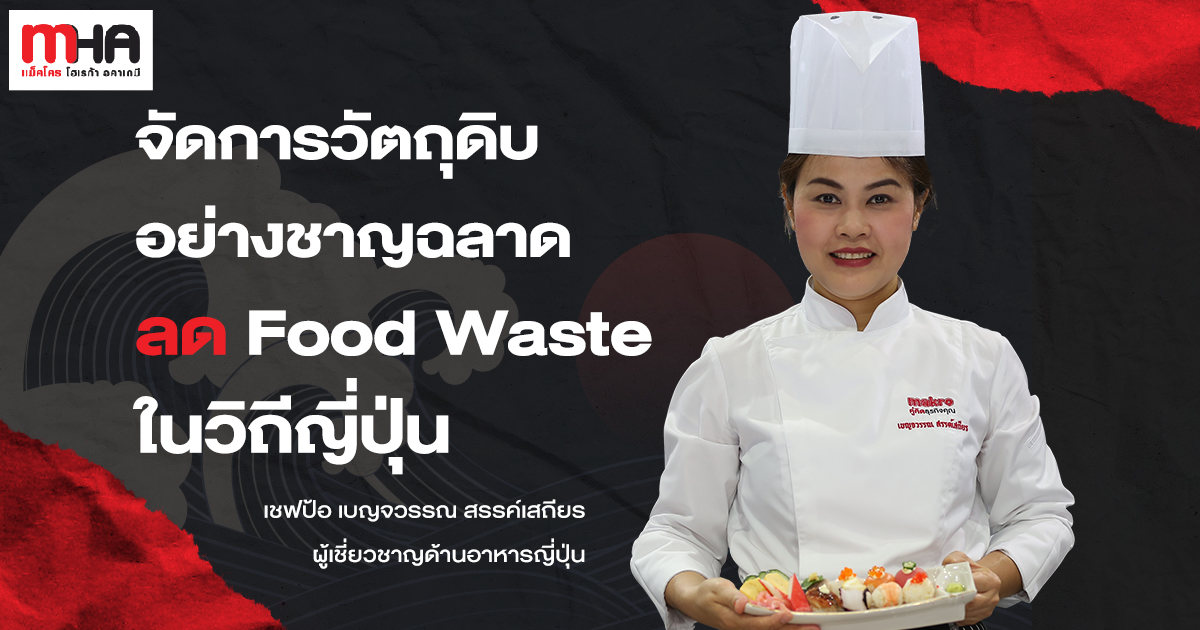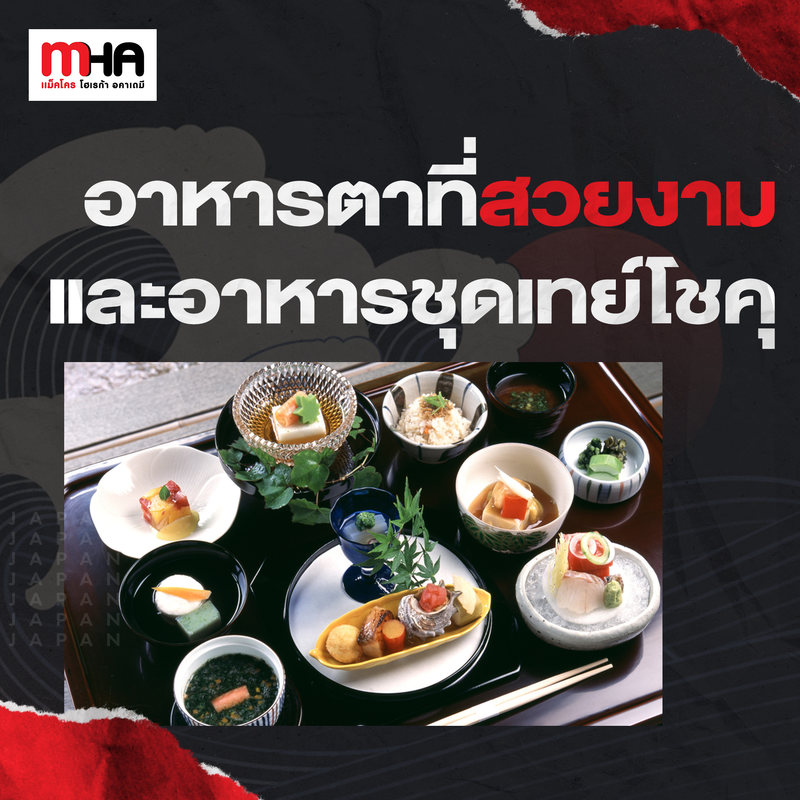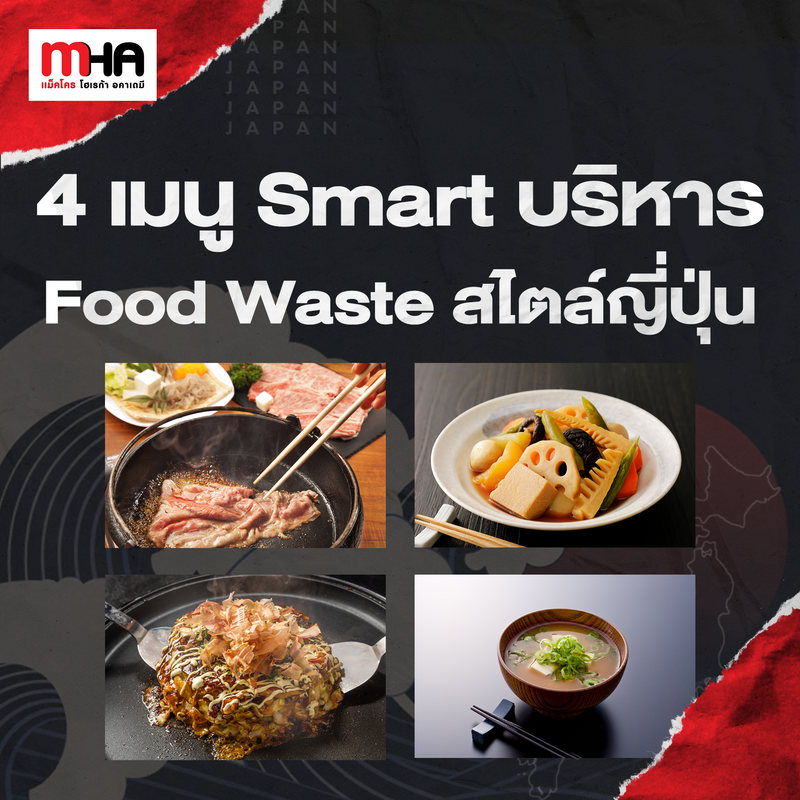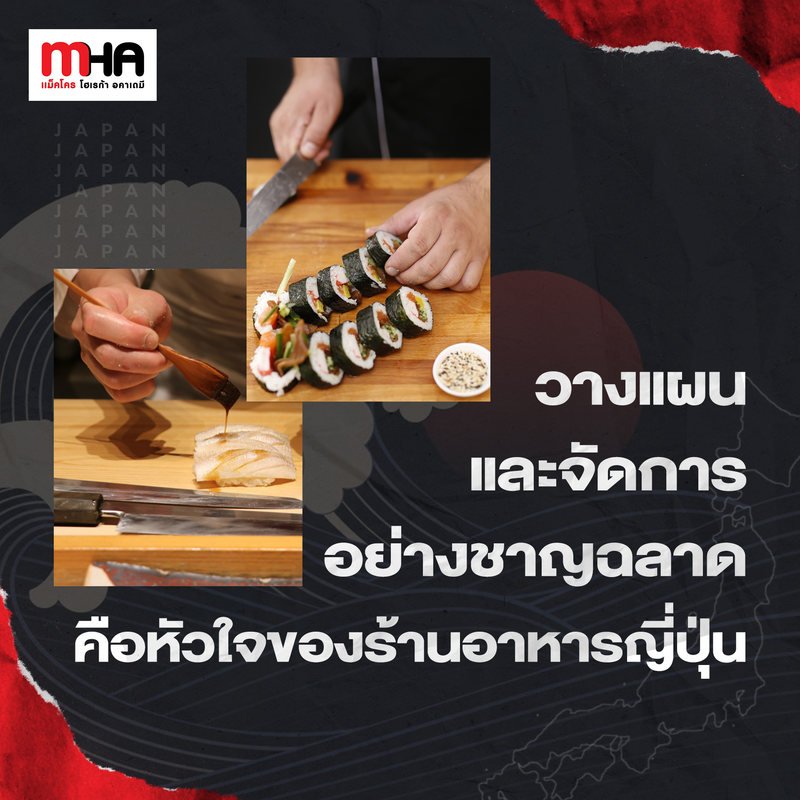Oct 06, 2020

Reducing food waste saves costs and also prevents money leaking on food waste. If talking about a country that intelligently manages raw material and efficiently reduces food waste, definitely that must be Japan.Today Chef Por Benjawan Sansathien, a Japanese expert from Makro Horeca academy, will share us an interesting history and solve the riddle of why people from rising sun country are a good example for this. Along with introducing How-to and giving us an example of a menu idea to reduce food waste in Japanese way. Therefore entrepreneurs can effectively apply this to reduce food waste at your restaurant, which will help reduce costs, money leakage and increase sales as well !!.

- History and stringency of ingredient usage in Japanese culture.
“Japan is a country that is exacting about making the most of their ingredients without any leftovers. It’s in their culture. As we all know, Japan has a cold climate with long winters. They can only grow rice once a year. In ancient days, Japan experienced the problem of not being able to grow enough rice for consumption. A lot of people, up to a million, died of starvation. That’s why Japan is very strict about ingredient usage and tries to make the most of their ingredients. That’s what’s ingrained in their culture.”
The poverty in ancient times affected Japanese...
1.Recognize, process and preserve food, so that it can be stored for a long time, such as mino, pickles sake, soy sauce, mochi and various types of flour etc.
2.Have a culture of using raw materials strictly and wisely minimizes food waste.

2. Attractive-looking food and teishoku.
“In order to use material worthy, japanese people will preserve or process food to it to the highest value. However if served only on the same menu, customers will inevitably get bored. Therefore japanese people will know how to innovate and create food from the existing ingredients and make it more various and also beautifully decorated when placed on the plate. Moreover, there is the art of eating which is the source of ‘Food by Eyes’ or ‘Beautiful eye candy’ and also the source of the ‘Teishoku food’ or known as Home made food, that grandmother or mother cooked with care for the family which have both beauty,appetizing and nutritional value as well”
Teishoku: Homemade set meal
1.Cooking carefully and considering the nutritional value.
2.It is a set meal that includes a main dish, side dishes and soup.
3.Beside to the Teishoku served at home for the family, most of the japanese restaurants are very popular to serve set food like this as well. The main reason for this is to allow restaurants to flexibly use the remaining ingredients to cook them on the menu, which will help manage raw materials not to be left over and to increase sales as well.
2.It is a set meal that includes a main dish, side dishes and soup.
3.Beside to the Teishoku served at home for the family, most of the japanese restaurants are very popular to serve set food like this as well. The main reason for this is to allow restaurants to flexibly use the remaining ingredients to cook them on the menu, which will help manage raw materials not to be left over and to increase sales as well.

3. 4 smart menu items for Japanese-style food waste management.
“In Japanese culture, there are many signature dishes which the name in Japanese is often translated or interpreted as ‘favourite’, but when you look in the other way, you will find out that it is caused by the need to deal with raw materials, Leave as little waste as possible.
Sample menu items for Japanese-style management of leftover ingredients.
1.Miso Soup, it is a food that can be used to cook a lot. It can use any type of meat and vegetables.
2.Okonomiyaki or Japanese pizza. Okonomi means favourite and yaki means grilled. It is a very popular menu that can help you get rid of leftovers efficiently, just only bring the ingredients mixed with flour and fry them in a sheet on the pan by adding any vegetables and meat.
3.Nimono or boiling food, whether it's pork,fish or vegetables, they can be boiled and cooked with mirin,soy sauce or sweet or salty sauce and decorate it beautifully on the plate.
4. Sukiyaki. Suki means ‘like’. Yaki means ‘to grill’. It’s a menu item where meat is seared in a pan before sauce is added for flavor. It’s also a menu item that allows you to use any meat or vegetable you want.
“As we can see these 4 japanese dishes are a good example of how flexible it is to use ingredients to manage and cook without leaving food waste effectively, which not only making Japanese housewives save money for their families, you can see that Japanese restaurant in general use these dishes as menu in the restaurant as well.”

“Many restaurants may have a fixed list of menus, but if we look closely at most japanese restaurants, we will find out that there are quite a few that each day have a special dish on the day. This is one of the methods that reflects the japanese restaurant entrepreneurs' clever in handling the leftovers of the raw materials”
This special menu may be added or arranged as a promotion price is useful in many ways, such as it helps in the flexibility of using raw materials, not letting it waste and if it’s a free dish as a complimentary. It will make customers feel special and feel good about the restaurant,so when he sees that it was worth it, he will come back to use service again. It is also considered as a promotion to help increase sales. Calling people into the restaurants causing the restaurants to have more sales.
“Better than letting raw materials spoil and become waste without any benefit, which thai restaurants may apply this concept for example, the restaurant might offer a daily special soup, or give customers to pay a little more extra cash. In addition, you may create a special daily menu from the leftovers of the ingredients, that will definitely help boost sales!”

“The Japanese restaurant business is very strict in handling and use of raw materials because of food waste causing waste and that become leaked money. So Japanese usually plan well from the beginning, starting from thinking of the menu, buying ingredients wisely until smart management ”
1.Smart Planning, it has been well thought out from the beginning ,such as what is the concept of the restaurant, what is the food will be sold. It has been thought in detail to the point that how many proteins does it take. What kind of meat and which part of meat can be cooked? Even think about the size and color of the raw materials as it will affect the beauty.
2.Smat buying. Buying cheap ingredients is not always good for restaurants. We often find that we will find that paying a little more expensive in order to get good quality products, there is no percentage waste (thinking of cabbage bought cheaply, and having to remove the outer shell that only half of it can be used). Apart from losing both money also waste both effort and time to manage waste resources in storage. Therefore it is best to purchase raw materials from a supplier that you trust in quality and ready to change the product immediately, if found out that the product does not match the quality you wanted.
3.Smart Management. Besides planning well also needs to be managed well. When knowing what ingredients are leftovers, there is a recipe list of the menu prepared, to deal with those raw materials before they waste and to be able to use it immediately. Including a good check to see what the amount of food waste is?, What is the cause? and what stage of work? to keep employees awake all the time and help protect the occurrence of food waste that will cause money leaking.
“When smart planning, smart buying ingredients and well management go into the details, I can assure that your money will definitely not leak out on food waste, so make sure you apply the Japanese version of the management concept to reduce food waste and apply it to your restaurant!!”
